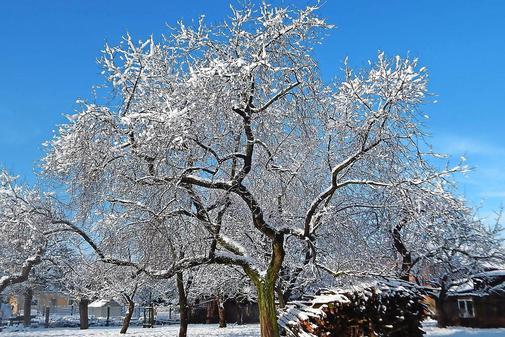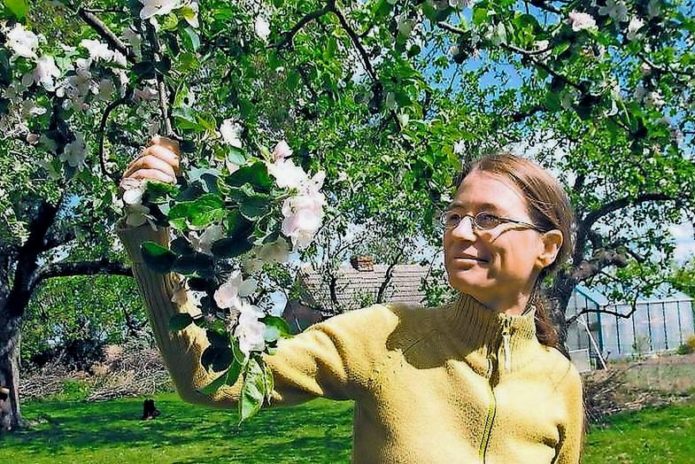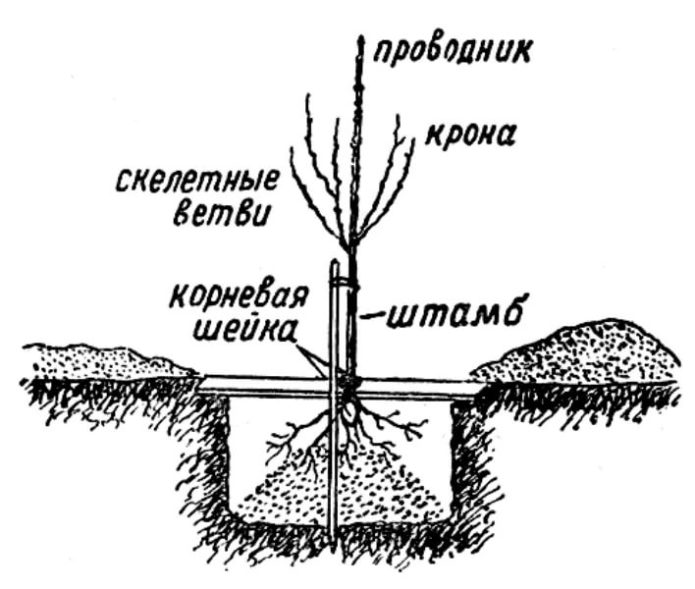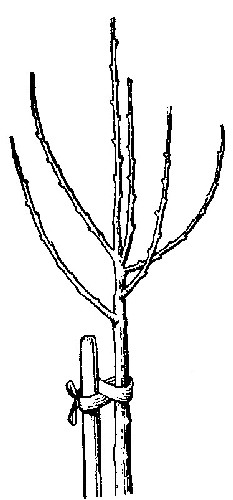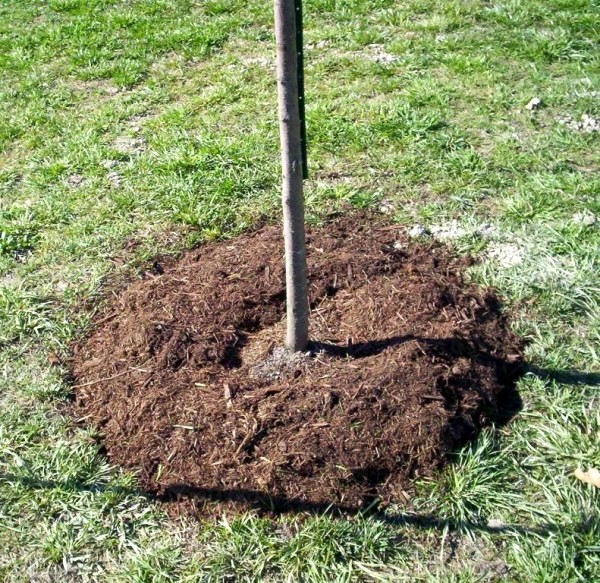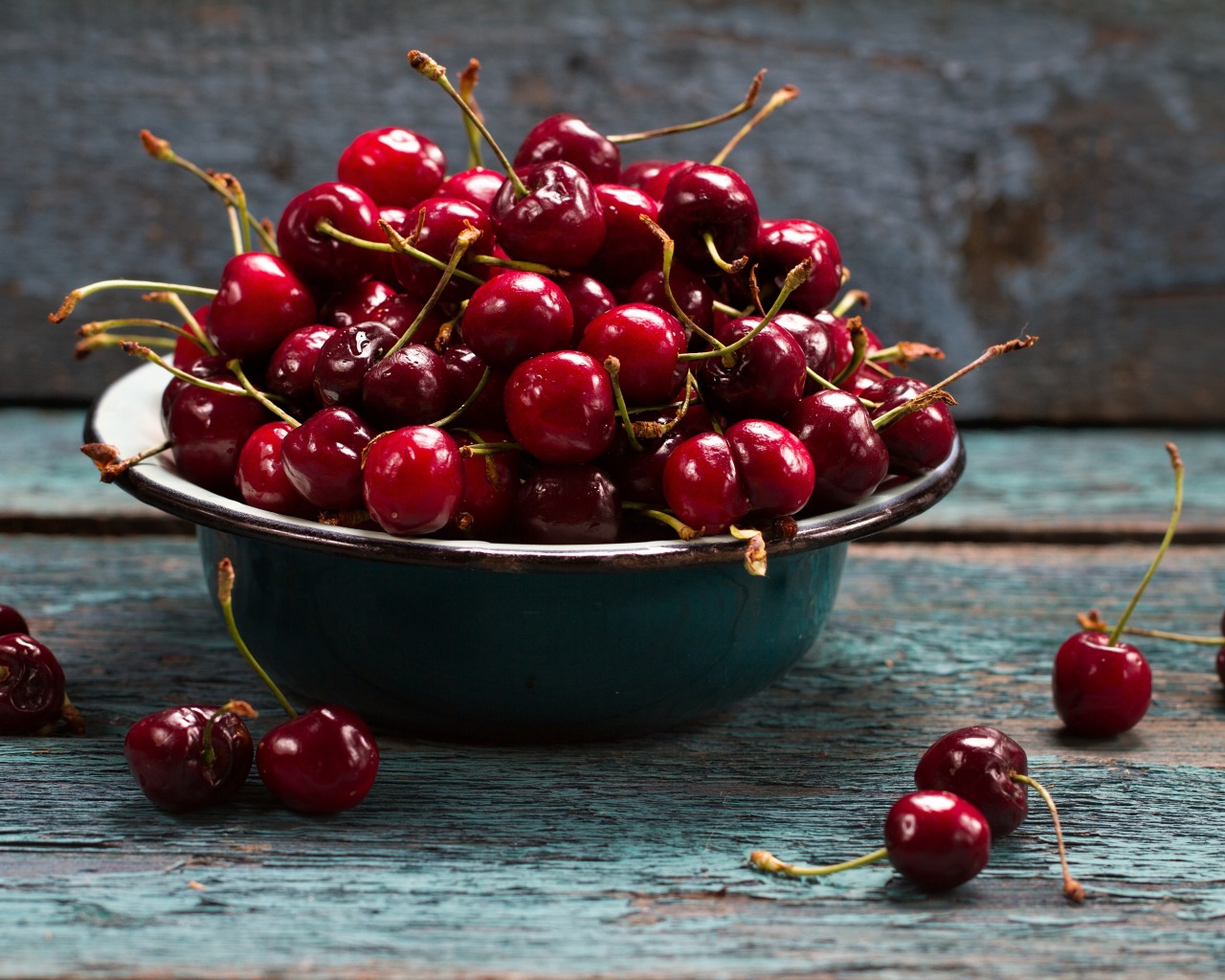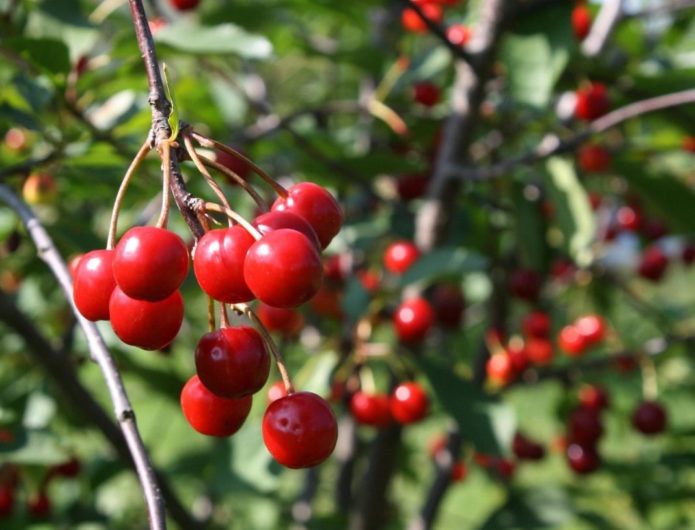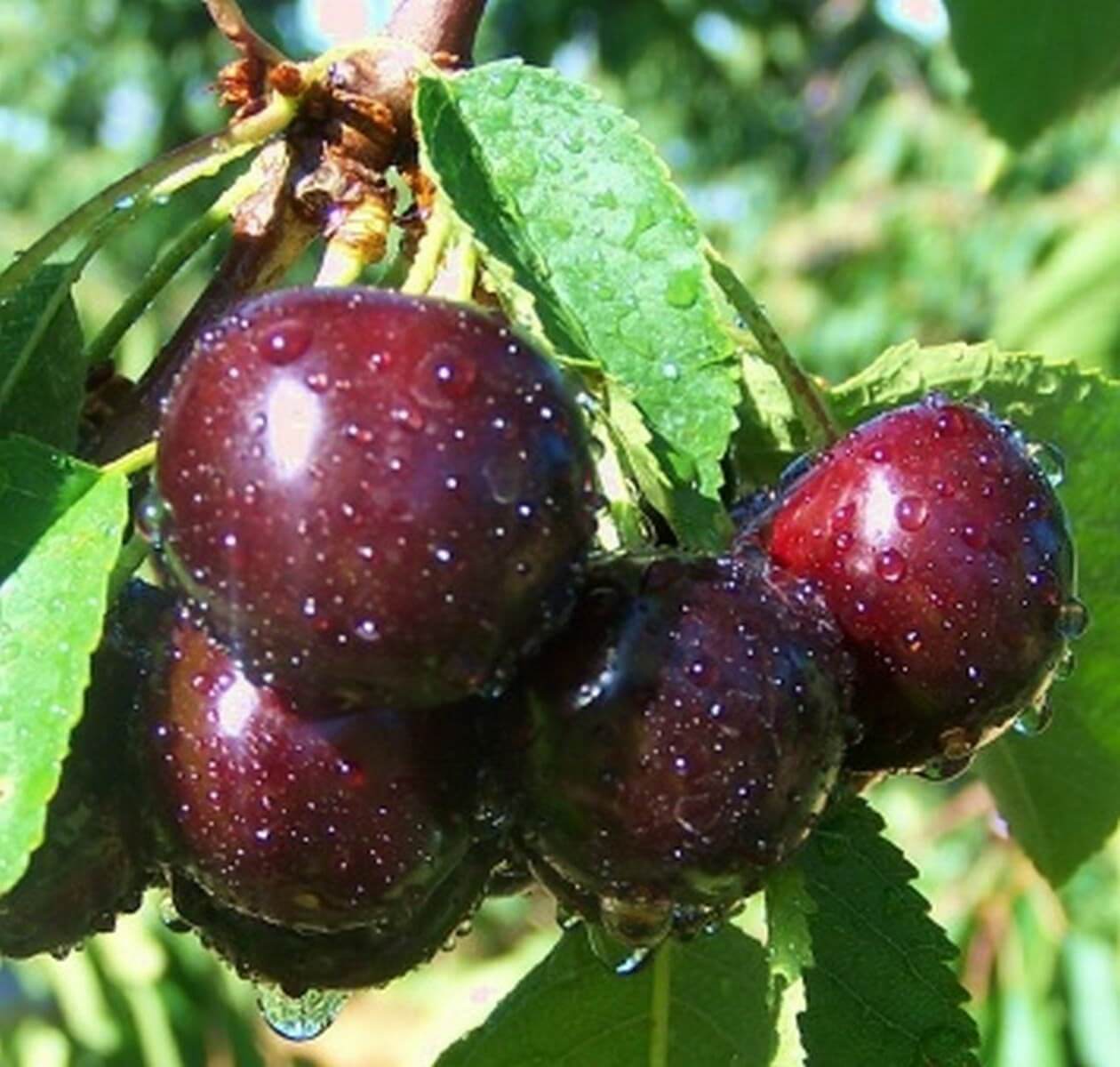Rarely, which cultivated plant has an abundance of names: Kokhova, Griot Podbelsky, Minister Podbelsky, Podbelskaya, Kochs Ostheimer. Certainly, cherries with their unmatched aromatic berries have a long history that is reflected in the name.
Content
The history of the origin of cherry varieties Podbelskaya
Sources indicate that the variety was created at the end of the nineteenth century in Germany by K. Koch. Cherry Podbelskaya obtained by crossing Griot Ostheimsky with cherry Lotova, named after the Minister of Agriculture of Prussia from 1893 to 1897, Viktor von Podbelsky.
Until now, on the land of Brandenburg, in the town of Barentim, a cherry tree of the Podbelskaya variety, which is 80 years old, grows. Despite its venerable age, the tree is healthy and produces delicious fruits, used fresh, compotes, baked goods and as jam. In Germany, the variety is considered rare.
Description and characteristics of the variety
The variety was included in the State Register in 1947 in the North Caucasus region, it is also grown in the Lower Volga region. In Ukraine, the variety is widespread in almost all regions. Cherry Podbelskaya fell in love in Moldova and is cultivated in Central Asia.
The tree is tall, the crown is dense and spreading, rounded. It is characterized by intensive growth. Due to the large size of the trees, there are problems with the care and harvesting.
The trunk is covered with gray-brown bark, skeletal branches are dark, thick. Young shoots grow upward. The leaves are large - more than 10 cm in length, oval, sharply sharpened at the top. The sheet plate is matte, dark green.
Podbelskaya cherry varieties bloom early. The flowers are white, large, collected in inflorescences of three or four. The corolla of the flower is more than 3 cm. In fruiting, both annual shoots and shoots of two, three and four years old are involved. As the tree ages, fruiting shifts to the periphery of the crown.
Cherry Podbelskaya belongs to large-fruited varieties. The shape of the berries is round or round-heart-shaped, the average weight is up to five grams. According to biological characteristics, the fruits are described as a hybrid of sweet cherry and cherry. The funnel is wide. The separation from the stalk is mostly dry. The skin is dark red to black, dense. The pulp is blood-red, dense, juicy, sweet with a slight sourness and a special tart aroma. The stone is oval, small, easily detached.
Cherry Podbelskaya, medium-early ripening. The fruits ripen at different times, but do not fall off. Depending on where the trees grow, the peak of fruiting occurs in the second half of June (Crimea, North Caucasus) or early July (Lower Volga region). Due to their rich, great taste and large size, the berries are used as a dessert, for making ice cream, cakes, liqueurs, and wine. Cherries can also be frozen, dried, made preparations: compotes, juices, jam.
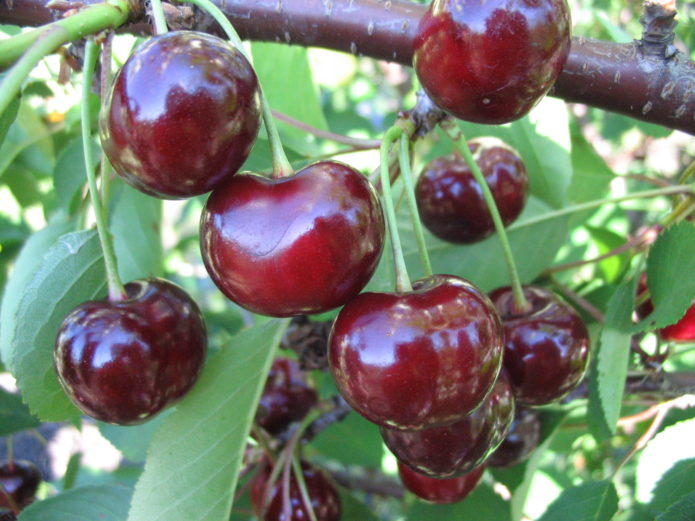
Large round-heart-shaped berries of the Podbelskaya cherry variety are juicy, sweet and sour, with a piquant bitterness
The variety is not fast-growing. Fruiting begins in six to seven-year-old trees and gradually grows in the future. The yield is high. In the Krasnodar Territory, cherry trees from seven to seventeen years old give an average of 12-13 kg of berries. The maximum yield for cherries of this age was about forty kilograms per tree.
The climate of the Crimea is best suited for the Podbelskaya variety. Mild winters and not very dry summer months have a beneficial effect on crop formation. In Crimea, an average of 75 kg of berries are harvested from one 20-30-year-old tree, and the maximum described yield was twice that.
Frost resistance of Podbelskaya cherry medium. Generative buds do not tolerate temperature extremes, and in severe frosts, trees suffer from frost breaks. Warm southern regions with mild winters without critical temperature fluctuations are best suited for cultivating the variety. The comfortable temperature corridor of the variety is very narrow, since the drought resistance and heat resistance of Podbelskaya cherry is below average.
The disease resistance of the variety is average. Treatments against pathogens are difficult due to the large growth of mature cherry trees. All these features are more than offset by the high productivity of the variety.
Cherry varieties Podbelskaya self-fruitless. The following varieties are best suited as pollinators: Griot Ostgeimsky, Lotovaya, Anadolskaya, Angliskaya early, May Duke, as well as early flowering cherry varieties.
Features of growing and care
For planting cherry varieties Podbelskaya choose light warm areas, protected from the winds. Do not plant trees in lowlands where water stagnates, as excess moisture can lead to root rot.
One- or two-year-old seedlings are chosen for planting. When buying, pay attention to the condition of the planting material. The twigs should be flexible, the buds on them live and free from defects. It is preferable to choose container trees. If only open-root seedlings are on sale, check the condition of the roots. They should be well developed, slightly damp, with no areas of decay or injury.
It is best to plant in spring. The soil in the southern regions is most often fertile, light in composition, with a slightly acidic or close to neutral reaction, which is most favorable for cultivating cherries. To ensure the harvest of berries when planting Podbelskaya cherries, space is also allocated for future pollinators, taking into account the fact that the roots of the trees are located in the area of the crown projection. A powerful wide crown develops in Podbelskaya cherry, therefore, the distance from the seedling must be provided for at least three to four meters.
The planting process consists of several sequential steps:
- Dig a hole measuring 70x70x60 cm.
- The top fertile soil layer is mixed with an equal amount of humus and a bucket of sand.
- The planting stake is fixed and the soil mixture is poured into one third of the depth of the pit.
- Place the seedling so that the root collar rises above the soil level.
- They fill up the soil and tamp well.
- The sides of the irrigation hole are formed and the seedling is watered abundantly until the water stops absorbing.
- A sapling is tied to a peg with a soft twine.
- The trunk circle is mulched with rotted sawdust or dry peat.
In the next three to four years, the seedling does not need feeding. Watering is provided regularly, but on demand. To do this, check the condition of the soil under the mulch layer. It is important to provide plants with watering 3 times per season:
- During flowering and fruit setting.
- After harvest.
- In autumn, three to four weeks before a constant low temperature is reached.
To prevent fungal diseases, cherry plantings are treated in spring with a 1% solution of copper sulfate or Bordeaux liquid. In early spring and autumn, whitewashing of the trunk and the main skeletal branches is carried out to protect the bark from sudden changes in temperature and sunburn. Over the summer, freshly cut grass is added to the trunk circle to protect the roots from overheating and suppress the growth of weeds around the tree.
Crown formation
Immediately after planting, the stem is shortened to a height of 60–65 cm. In the future, given the intensive growth of Podbelskaya cherry and the tendency to thicken the crown, they try to give it a sparse-tiered shape.
In the fourth or fifth year, the crown is limited at a height of 3.5-4 m from the ground, removing part of the central conductor above the last skeletal branch. If this is not done, the tree will reach a height of more than five meters, which will lead to difficulties in care and harvesting.

In vigorous trees, a sparse-tiered crown is formed, which ensures the strength of skeletal branches and good illumination.
In trees older than five to six years, pruning is reduced to maintaining the shape and removing weak, diseased, broken, criss-crossing, rubbing branches growing inside the crown. But the difficulties of leaving are paid off by the abundance and quality of the berry harvest.
Video: pruning cherries
Reviews about the variety Podbelskaya
For the Volyn region with high humidity, only disease-resistant varieties are suitable, otherwise after coccomycosis the picture is deplorable. I think the best cherry variety "Podbelskaya" - one drawback, comes into full fruiting at the age of 7, but very large and tasty fruits, at the age of 15 - a yield of 40 kg per tree. Also for Ukraine is a promising variety Nochka-1 (size and taste, I don’t know for stability). All varieties recommended for Russia, which will be discussed below, are also suitable.
We have a lot of cherries this year. The Podbelskaya cherry variety is the tastiest I've ever eaten. It is large, juicy, dark in color and has a sweet and sour taste. I only close a couple of 0.5 liter cans for the winter in my own juice. I also just freeze in the refrigerator and then cook dumplings and compotes. Once upon a time, this cherry was not and I picked it up, and closed the cherry variety Shpanka - I really did not like it - too sour. It is necessary to tear carefully, preferably from the stairs, many break their arms and legs if they tear cherries from a tree. She has fragile wood.
The sweet cherry was pleased with the harvest, they bought it as a yellow Drogan variety, but it does not look like it. Most likely the variety Tenderness. The Dilem variety also had a good harvest.
Cherry Podbelskaya is the most delicious.
According to VNIISPK. Podbelskaya. The tree is vigorous, reaches a height of 5 m or more, forms a beautiful, rounded, strongly leafy crown. Self-infertile, the best pollinators are English Early, May Duke, Griot Ostgeimsky, Lotovaya, Anadolskaya, as well as cherry varieties. My Podbelskaya has been growing for several years, but there are no pollinators for it, so the yield is extremely low. It has never frozen out (and we are in the north of Ukraine), it blooms wonderfully, only it does not set fruit, so this year I finally plant pollinators for it (maybe unsuccessful ones, which we need - we either don't, or don't grow). Consult with Cherries and plant pollinators right away.
Despite the seeming complexity, growing Podbelskaya cherries by gardeners is not considered a troublesome business. It doesn't matter if it really is or the delicious taste of the berries outweighs the complexity of care. The main thing is that the old Podbelskaya cherry variety retains its value after a hundred years and continues to delight with exquisite taste in the age of the Internet and spaceships.
